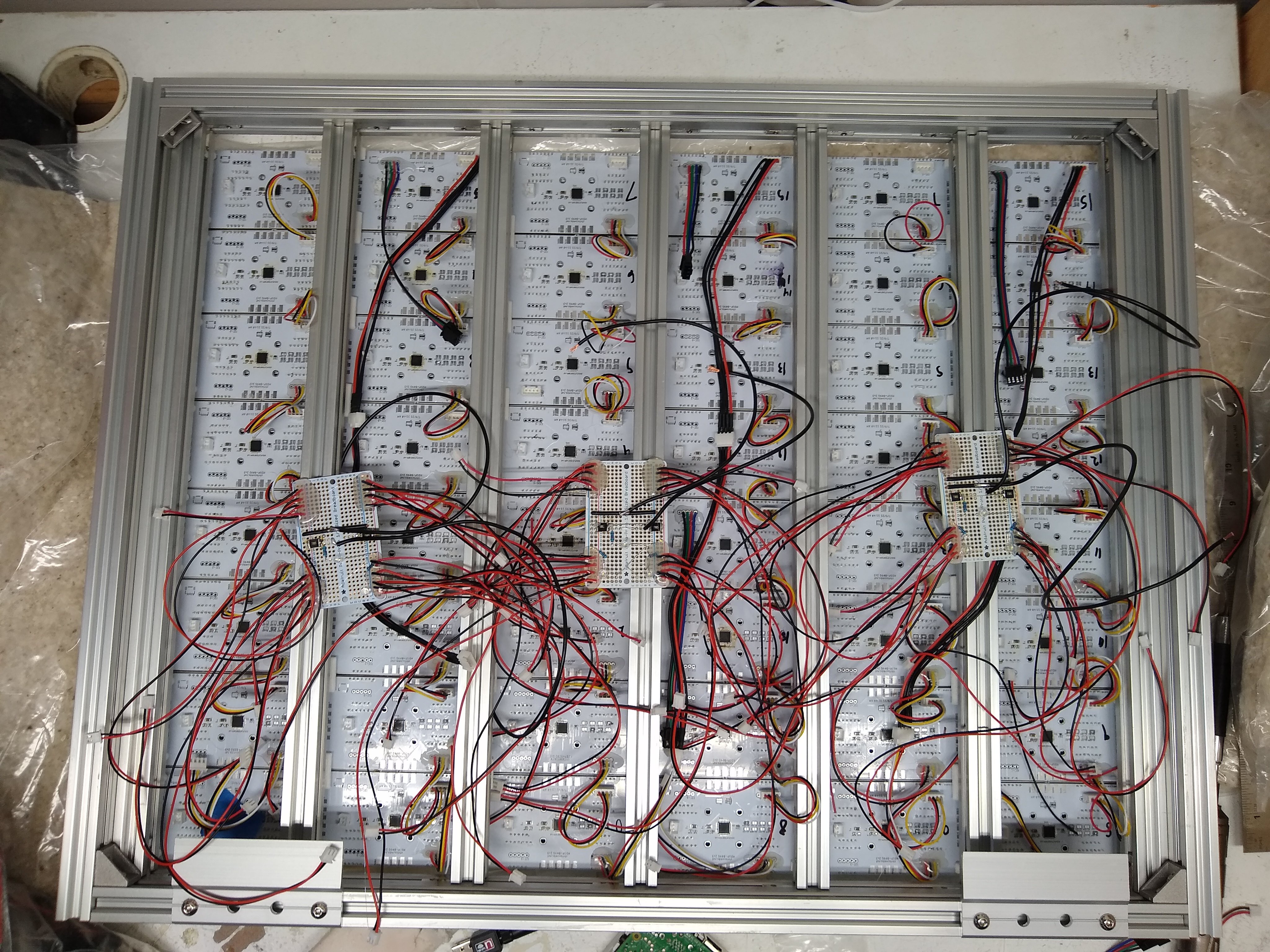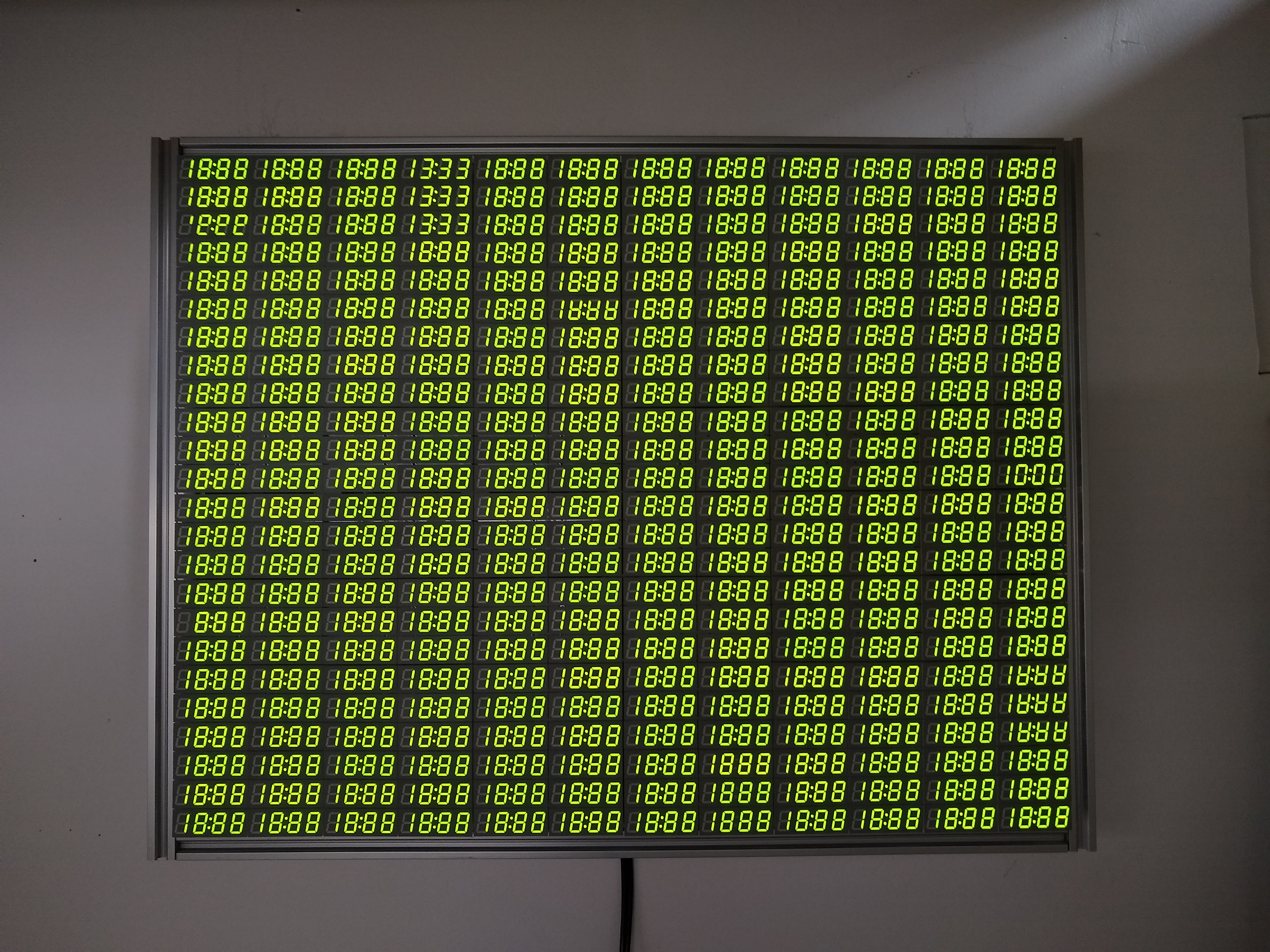I think the biggest technical challenge with this project has been powering it!
In general, the project draws around 10A at 5V; I have set myself an overall maximum power budget of 20A.
The older displays I'm using are not the most efficient--it takes a fair amount of current to get a decent level of brightness out of them. Since they're scanned across a matrix, meaning each LED die only gets brief pulses of current with plenty of time to cool down in between, you can get away with more than the "maximum" 20mA continuous current for an LED; even 100mA can work fine for scanning a multiplexed display like these. I bet some of you have done even more.
So on the one hand, my goal is to pump as much current into the LEDs as possible, to ensure that the display has a reasonable brightness with a wide variety of lighting, such as indirect sunlight inside a home or gallery.
But then there's just the sheer quantity of displays here. If I start drawing 100mA across 6 displays, even though each LED die only sees it for 1/12 of the time, I'm still continuously drawing perhaps 80mA per display continuously (allowing for some "blanking" time in between as the controller's transistors switch)... That'd be, uh, 480mA per panel or 23A continuous current draw. It's certainly possible to get power supplies that can do this--but the wiring and power distribution also become a headache. Using a wire with too small a gauge could cause it to heat up to the point of melting its insulation, at which point, problem!
To my understanding, wires heat up with the amount of current passing through them, not the wattage. So in general it can make sense for a project like this to use as high a voltage as possible, so that a given wattage draws lower currents, keeping your wires cooler.
The IS31FL3733 display controllers I'm using accept a reasonable range of voltages: 2.7-5.5V.
If I wanted to keep things convenient for interfacing to the Pi's 3v3 I2C bus, I could just use that voltage to power the whole system. But I felt it was worth the current-reduction payoff to run 5V to each controller, meaning that I need PCA9306 level converters to bring the Pi's 3v3 signals up, as mentioned in another build log.
The IS31FL3733 does have separate pins for supplying the switching power and VCC, but they seem to be connected internally in a weak way, such that you can't, say, power them at different voltages or disconnect VCC to power-cycle the controller. (Found that out the fun way.)
I built this project around a Mean Well 5V/40A power supply in a separate enclosure, connected via a very short run of AWG12 wire. This 5V hits the Pi's "warm bath" board through PTCs and MOVs, and also three different distribution boards that are designed to protect against short circuits or other high-current failures. Due to last-minute mistakes, I needed to hand-build these distribution boards, which you can see in this progress shot:

(thank goodness for those freebie Perma-Protos!)
This was an in-progress shot, showing the rough arrangement before I cabled everything up properly. I am using a number of 3d-printed cable restraints to keep individual wires tucked away inside the channel of the 2020 extrusions.
Each display panel has a reasonable amount of capacitance, and in general I haven't seen instabilities or flickering. I chose to configure the display controllers with high current draws via their sense resistors, and to use their software-configurable brightness controls to reduce the overall system brightness to 31/255 maximum brightness. It could get a lot brighter, given stronger power distribution and larger cables. With appropriate software safeguards, I am more comfortable having "headroom" in the application's brightness control for future reconfiguration as needed.
Here's an early test of power draw, doubling as a chance to see which segments were missing:

 Chris Combs
Chris Combs
Discussions
Become a Hackaday.io Member
Create an account to leave a comment. Already have an account? Log In.